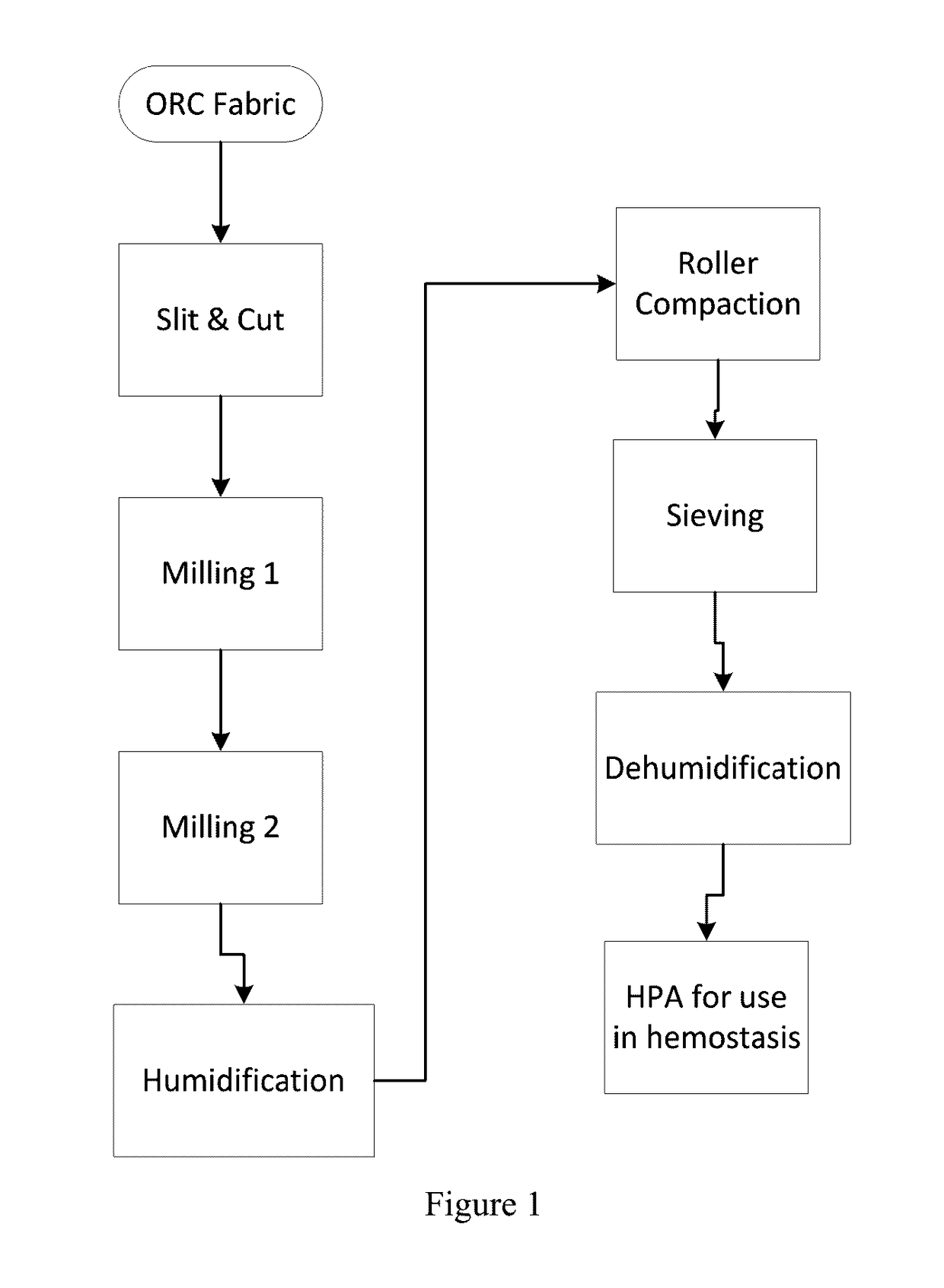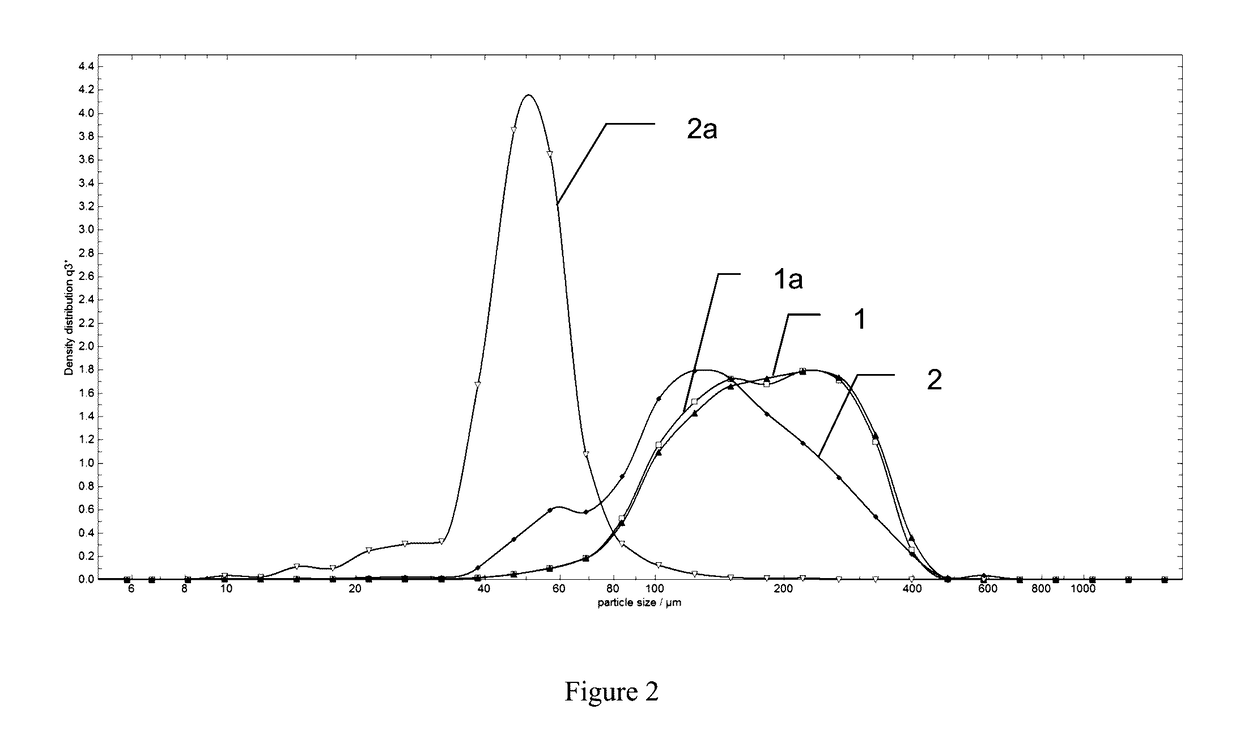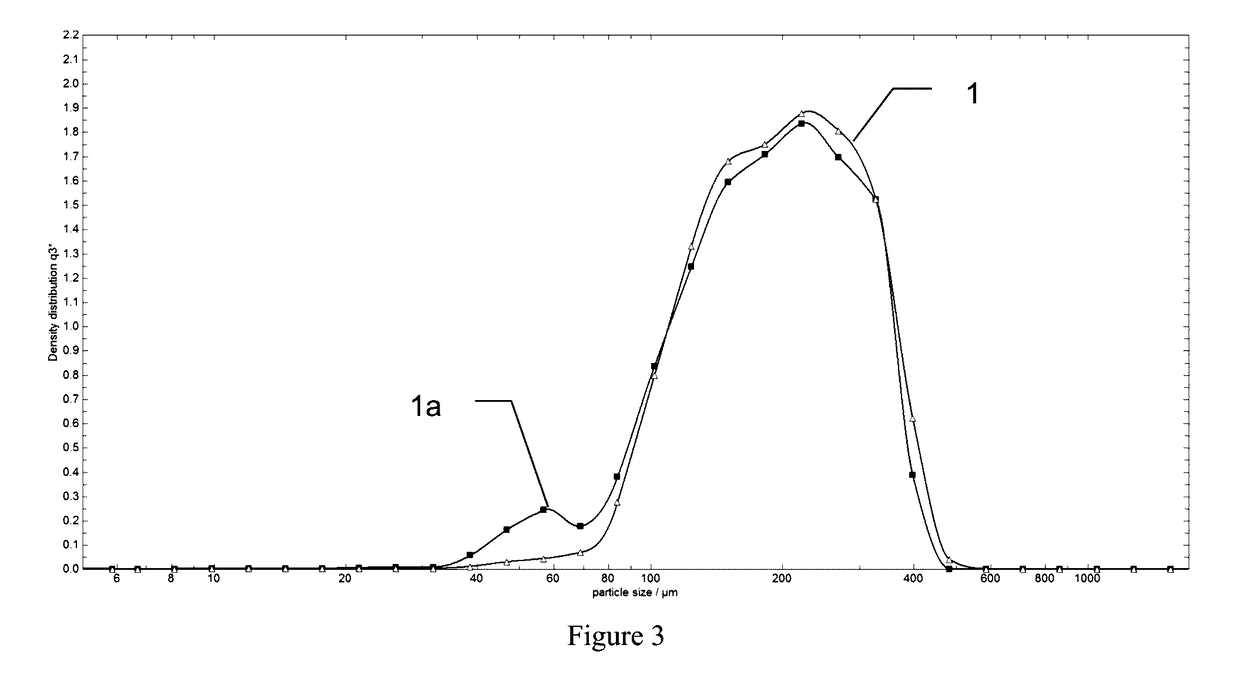Compacted Hemostatic Cellulosic Aggregates
a technology of cellulose fibers and aggregates, applied in the direction of bandages, drug compositions, extracellular fluid disorders, etc., can solve the problems of ineffective or impractical measures, substantial bleeding can occur, and the effect of ligation or other conventional methods of control is ineffective or impractical
- Summary
- Abstract
- Description
- Claims
- Application Information
AI Technical Summary
Benefits of technology
Problems solved by technology
Method used
Image
Examples
example 1
ring and Characterization
[0056]Hemostatic aggregates were made from ORC material as described above through steps of slitting and cutting of ORC source material using SURGICEL® Original fabric including a first milling step, a second milling step via air classifier to obtain an intermediate fine ORC fiber, humidification of the intermediate fine ORC fiber, roller compaction, granulating, sieving and dehumidification.
[0057]Hemostatic aggregate materials comprise a plurality of individual fibrils of fine ORC fiber that have been compacted and joined together by a compaction process. In preferred aspects, the hemostatic aggregate materials comprise at least 5 elongated individual fibrils of fine ORC fiber, more preferably at least 10 elongated individual fibrils of fine ORC fiber, or between 5 and 100 elongated individual fibrils of fine ORC fiber, such as 10-50.
[0058]The resulting materials are aggregates, not particles. There is no core region or defined pores. Rather, the fibrils or...
example 2
[0067]Using the manufacturing techniques explained above, hemostatic aggregate samples were prepared with and without humidification step; all other processing steps being equal. Both specimens were exposed to size distribution measurement by using Sympatec QICPIC equipment using 0.2 bar vacuum processing, and the size distribution curves were obtained (FIG. 1). Curve 1 shows size distribution of the specimen made with a humidification step applied to ORC intermediate fine fiber prior to roller compaction, while curve 2 shows size distribution of the specimen that was made without the humidification applied to ORC intermediate fine fiber.
[0068]After that both specimens 1 and 2 were exposed to a vibratory test. The test consisted of positioning vials containing 2 g of hemostatic aggregates powder on a sieve shaker (Retch AS200) which vibrated at amplitude of 1 mm / g for 90 minutes, followed by 3 mm / g for 90 minutes. After the vibratory challenge the specimens were again exposed to the...
example 3
[0070]A test was performed using the methodology described above for size distribution measurements. As above, hemostatic aggregates samples prepared with and without humidification step, with all other processing steps being equal, were measured on the same QICPIC equipment but using two pressure settings—low pressure of 0.2 bar vacuum, and elevated pressure of 1 bar vacuum. Each specimen was exposed to size distribution measurement by using QICPIC equipment both 0.2 bar and 1.0 bar vacuum processing, and the size distribution curves were obtained for comparison. FIG. 3 shows curve 1 corresponding to size distribution measured at 0.2 bar for a hemostatic aggregates specimen made with a humidification step applied to ORC intermediate fine fiber prior to roller compaction. Curve 1a shows size distribution measured at 1.0 bar for the same hemostatic aggregates specimen. The data indicates that elevated processing pressure at 1.0 bar vacuum results in substantially the same size distri...
PUM
| Property | Measurement | Unit |
|---|---|---|
| size distribution | aaaaa | aaaaa |
| size distribution | aaaaa | aaaaa |
| water content | aaaaa | aaaaa |
Abstract
Description
Claims
Application Information
 Login to View More
Login to View More - R&D
- Intellectual Property
- Life Sciences
- Materials
- Tech Scout
- Unparalleled Data Quality
- Higher Quality Content
- 60% Fewer Hallucinations
Browse by: Latest US Patents, China's latest patents, Technical Efficacy Thesaurus, Application Domain, Technology Topic, Popular Technical Reports.
© 2025 PatSnap. All rights reserved.Legal|Privacy policy|Modern Slavery Act Transparency Statement|Sitemap|About US| Contact US: help@patsnap.com



